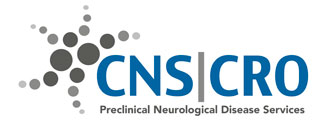ALS-PDC
CNS|CRO’s proprietary animal model of ALS-PDC (amyotrophic lateral sclerosis-Parkinsonism dementia complex) utilizes a neurotoxin that causes a slowly developing and progressive series of well-defined sequential deficits in mice and rats. The neurotoxin, first documented in humans following dietary exposure to the cycad seed in the 1940’s on the island of Guam, was identified and patented by Neurodyn Inc., CNS|CRO’s parent company. Neurodyn Inc. continues to chemically synthesize the neurotoxin for test use by CNS|CRO.
CNS|CRO Model Advantages & Differentiation
-
The model can be produced in healthy, wild type, out-bred adult animals;
-
Disease process is recreated from its inception, without the induction of genetic lesions that are only representative of a small percentage of the entire patient population;
-
Due to the slowly progressive and sequential development or neurodegenerative deficits in this model, therapeutic screening may be performed over an extended time frame, thus improving outcomes of preclinical studies (e.g. target identification, mechanism of action validations, etc.);
-
Unlike other “environmental” models, CNS|CRO’s model satisfies the basic criterion of etiological validity, with the same factor linked to human disease used for recreation of the disease in animals;
-
Distinct from genetic or transgenic models, CNS|CRO’s animal model mirrors all the essential features of the human condition, from the appearance of behavioural deficits through to biochemical abnormalities.
Validation
Three studies have been conducted which provide conclusive evidence that point-in-time results from CSN|CRO’s slowly progressive PDC model are fully comparable to those generated using conventional models of MPTP and MPP.
Please contact info@cnscro.com for further details.
